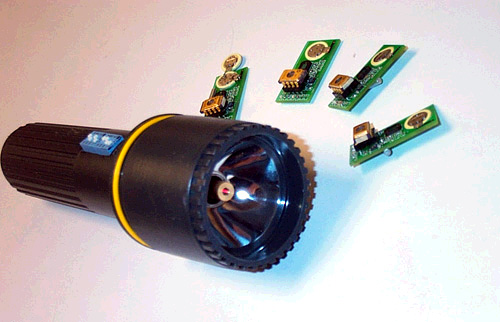Responsive Tagging Based on Optically Triggered Microprocessor Wakeup

A prime goal of ubiquitous computing is the embedding of sensing, communication, and computation into everyday objects. One consequence of this paradigm is that perhaps nothing will be lost again, allowing us to gain rapid access to the objects we want. This is particularly important in the age of digital storage media, where information content is often not obviously expressed by the appearance of packaging. The mechanical constraints of CDs, DVDs, and MiniDVs, for example, means that their content is abstracted into or scrawled onto anonymous, homogeneous containers. This is even true of books. How many times have we stared at a shelf full of books in the library only to find what we are looking for half an hour later? We have designed an active tagging system that responds to a coded optical beam from several meters away. The tags contain a minimalist microprocessor that ambiently operates in shutdown mode and, upon detecting particular frequency components in the AM-modulated interrogation beam, awakens to decode the incident digital message and produce an appropriate response. The lack of linear amplifiers means that these tags draw under 0.5 μA when sleeping, hence can operate up to 10 years on a lithium coin cell. The interrogator is a "flashlight," with which one scans an area; when the light beam hits a tag programmed with a code that matches that sent by the interrogator, an on-tag LED flashes, indicating that the desired object is "found."
Link here for a QuickTime Video (4.5 Meg) demonstrating our prototype ('02) flashlight
Link here for a QuickTime Video (0.8 Meg) demonstrating the advanced ('05) flashlight, showing the extended range and speed of operation.
Link below for a short paper describing the system as originally presented at Ubicomp 2002
in Sweden:
The
FindIT Flashlight: Responsive Tagging Based on Optically Triggered Microprocessor
Wakeup Hongshen Ma, Joseph A. Paradiso. in G. Borriello and L.E. Holmquist
(Eds.): UbiComp 2002, LNCS 2498, Springer-Verlag Berlin Heidelberg, 2002,
pp. 160-167.
A paper describing the advanced flashilight system was presented at IEEE AutoID 2005:
An
Ultra-Low Power, Optically-Interrogated Smart Tagging and Identification
System,
Gerardo Barroeta Perez, Mateusz Malinoski, and Joseph A. Paradiso, in
Proc. of Auto ID 2005, The Fourth IEEE Workshop on Automatic Identification
Advanced Technologies, Buffalo, NY, October 17-18, 2005, pp. 187-192.

Matt Malinowski

